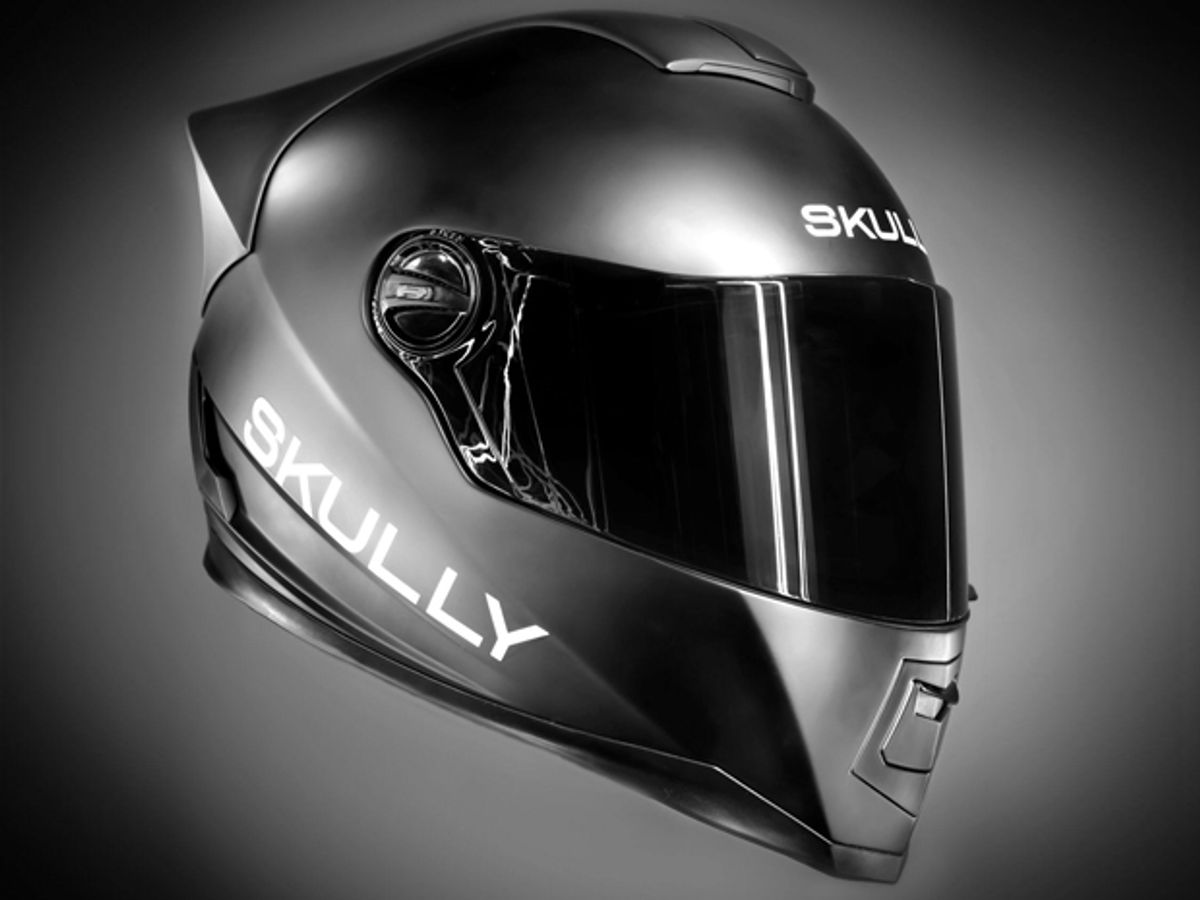I learned one very simple rule in my motorcycle safety course: keep your eyes and your head pointing toward the place you want to go. It sounds straightforward. But the truth is, you have to break this rule all the time. You check your gas gauge; you look over your shoulder before changing lanes; you crane your neck to see a road sign. During moments that I take no pride in, I have even broken this rule by stuffing my cellphone up into my helmet to answer an emergency call.
Riders who wear the new, digitally enhanced, Skully AR-1 helmet—which the company is calling "the world's smartest motorcycle helmet"—may never have to break this cardinal rule ever again. The design pushes all the information a rider needs onto a heads-up display right in the visor.
The most useful feature is provided by a wide-angle camera housed in the back of the helmet that captures a near 180-degree image of the road behind the rider, including blind spots on either side. Riders see this as a transparent display floating just off the center of the field. (The display is designed to focus at infinity so that it stays clear no matter where riders are looking and whether or not they wear glasses.)
The helmet has also built-in GPS and a turn-by-turn navigation system. And when connected to your smartphone via Bluetooth, you can take calls and play music, both of which are welcome features to the long-distance rider.
But for now, the Skully AR-1 only exists as a prototype. The company that wants to mass produce it has launched an Indiegogo campaign to raise the funds it needs to bring the helmet to market. The campaign is going extremely well, and contributions now total more than $1 million, or four times the initial fundraising goal. To receive a helmet as a perk, backers have to contribute a minimum of $1,399, with shipping expected to begin next May.
But despite its sleek design and cool features, the helmet still needs to address one crucial question, at least in the opinion of this writer (and rider): Will it excel in protecting a rider's head in the event of a crash? At this point, the designers promise to provide the certification of safety required by the U.S. Department of Transportation.
But this is really just the bare minimum that riders look for when buying a helmet. The gold standard in helmet certification comes from a private non-profit research group called the Snell Memorial Foundation. Most riders (including myself) want to see a Snell sticker on their helmets. There has been no word yet on whether the Skully AR-1 will achieve this level of certification.
Another question is whether the helmet's display and other digital functionalities could become a distraction for some riders—and, in this case, lead to accidents, instead of preventing them. The designers seem to want to keep the interface safe and simple. But at the same time they have mentioned letting some users access a software development kit to build new applications. Which is to say this helmet could basically develop into a giant, polycarbonate smartphone fortress for your head.
Just remember to keep your eyes and your head pointing toward where you want to go.




